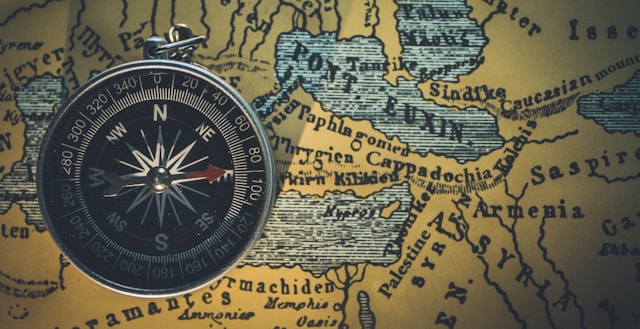Planning the perfect itinerary can make your travel experience smoother, more enjoyable, and stress-free. A well-thought-out itinerary ensures you make the most of your time, see all the must-visit spots, and have a good balance of activities and relaxation. Here’s an extensive guide on how to make the perfect itinerary for traveling:
1. Determine Your Travel Goals and Preferences
Start by defining your travel goals and preferences. Ask yourself the following questions:
- What do you want to achieve from this trip? (e.g., relaxation, adventure, cultural immersion)
- What type of traveler are you? (e.g., solo traveler, family traveler, budget traveler)
- What are your interests? (e.g., history, nature, food, art)
Understanding your goals and preferences will help you tailor your itinerary to suit your needs and interests.
2. Research Your Destination
Gather as much information as possible about your destination. Use travel guides, blogs, forums, and social media to learn about the following:
- Must-see attractions and landmarks
- Local customs and traditions
- Weather and best time to visit
- Transportation options
- Safety considerations
This research will give you a comprehensive understanding of what to expect and help you plan accordingly.
3. Create a Rough Outline
Based on your research, create a rough outline of your trip. This should include:
- Arrival and departure dates
- Major cities or regions you want to visit
- Key attractions and activities
- Any events or festivals happening during your visit
Having a rough outline will provide a framework for your itinerary and help you visualize your trip.
4. Plan Your Route and Transportation
Determine the best route for your trip, considering factors like travel time, convenience, and cost. Research transportation options such as flights, trains, buses, and car rentals. Consider the following tips:
- Book flights and long-distance transportation in advance to secure the best prices.
- Use local transportation options, such as public buses, trains, and bikes, to save money and experience the local culture.
- If you plan to drive, familiarize yourself with local driving laws and conditions.
5. Allocate Time Wisely
Allocate time for each activity and destination, ensuring a balanced itinerary. Consider the following:
- Allow sufficient time for travel between destinations.
- Include buffer time for unexpected delays or changes in plans.
- Balance busy days with relaxation or free days.
- Allocate time for meals, rest, and self-care.
A well-balanced itinerary will prevent burnout and allow you to fully enjoy your trip.
6. Book Accommodations
Choose accommodations that suit your budget, preferences, and travel goals. Consider options such as hotels, hostels, vacation rentals, and guesthouses. When booking accommodations:
- Look for centrally located options to reduce travel time.
- Read reviews and check ratings to ensure quality and safety.
- Consider amenities and services that are important to you (e.g., Wi-Fi, breakfast, airport shuttle).
7. Plan Activities and Attractions
List the activities and attractions you want to experience at each destination. Prioritize must-see spots and allocate time for them in your itinerary. Consider the following tips:
- Group attractions by location to minimize travel time.
- Check opening hours and days of operation for attractions.
- Look for guided tours or local experiences to enhance your visit.
- Include a mix of activities, such as sightseeing, cultural experiences, outdoor adventures, and leisure time.
8. Make Reservations and Book Tickets
For popular attractions, tours, and activities, it’s a good idea to make reservations and book tickets in advance. This ensures you secure a spot and often saves time and money. Consider booking the following in advance:
- Tickets for museums, landmarks, and cultural sites
- Guided tours and excursions
- Special experiences, such as cooking classes or theater shows
9. Create a Daily Schedule
Organize your itinerary into a daily schedule, outlining the activities, attractions, and transportation for each day. Include important details such as:
- Address and contact information for accommodations
- Transportation schedules and tickets
- Reservation and booking confirmations
- Emergency contacts and local emergency numbers
A detailed daily schedule will help you stay organized and ensure you don’t miss any important activities.
10. Stay Flexible and Open-Minded
While it’s important to have a well-planned itinerary, it’s equally important to stay flexible and open-minded. Be prepared for unexpected changes, such as weather disruptions, transportation delays, or spontaneous opportunities. Consider the following tips:
- Have a list of backup activities or attractions in case of changes.
- Be open to adjusting your plans based on local recommendations and experiences.
- Allow yourself time to wander and explore without a strict schedule.
11. Use Technology to Your Advantage
Utilize travel apps and tools to help you plan and manage your itinerary. Some useful apps include:
- Google Maps: for navigation and finding nearby attractions
- Booking and Airbnb: for booking accommodations
- TripAdvisor: for reviews and recommendations
These apps can streamline your planning process and make managing your itinerary easier.
12. Prepare for the Unexpected
Travel often comes with unexpected surprises, both good and bad. To ensure you’re prepared, consider the following:
- Pack a basic first-aid kit and any necessary medications.
- Have a backup plan for important documents, such as photocopies of your passport and travel insurance.
- Keep some emergency cash and a list of important contacts.
- Stay informed about local news and events that may affect your travel plans.
13. Reflect and Adjust
After each day of your trip, take a moment to reflect on your experiences and adjust your plans if needed. Consider what worked well and what could be improved. This reflection can help you make the most of the remaining days of your trip and enhance future travel planning.

